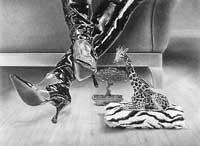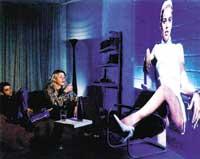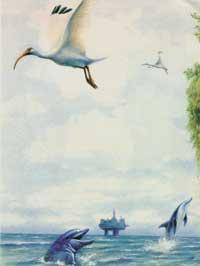Hologram, overview
The success of the film with the computer “Toy story” directed by John Lasseter or the role of new technologies in images of films such as “Forrest Gump” have prompted me to reflect on the attraction of these resources.
From now on the seventh art will focus only on the path of these utilities, or will computer work be nothing more than a curiosity that will be presented to us from time to time?

As with other technologies, I do not think that the computer, despite its spectacular utilities, dominates the cinema, although all these techniques are for its service. In short, computers have no heart or, of course, intelligence.
About ten years ago, many believed that holography would have a big impact on this dark factory of our dreams. For its part, history has shown us that all these illusions have ended up for sale at the fairs of the festivals of our peoples.
Salvador Dali, in April 1972, spoke like this in New York about holography:
“Since Velázquez’s time, all artists have shown interest in three-dimensional images. In modern times, Picasso's analytical cubism tried to obtain Velázquez's three dimensions. Now, thanks to Gabor’s genius, holography has reached the capacity of a new Renaissance of art.”
It is true that during the last 30 years holography has known an enormous development in fields as diverse as research, medicine, science, industry or art. These utilities are known and, on many occasions, such as phone and credit cards, are established in our daily life, although we hardly listen to them. As for art, it does not seem that its influence has been as great as expected.
What is holography?
The holography, created in the 1940s, was awarded the Nobel Prize by scientist Dennis Gabor during the realization of an electronic microscope to visualize atoms. He didn't achieve that goal, but he did the first hologram. Then, in 1963, E. Leith and J. The Upatnieks, using the laser, took a big step towards improving the system.
When the photographic technique was invented there was also a revolution in the history of technique and art, but in this case the configuration of reality materialized in a two-dimensional plane.
The advantages of holography can be framed in two levels: as for the layout, the image obtained is formed in the three-dimensional plane, increasing the fascination for reality. Technically, in the field of holography no image targeting objects are used.

But for all this to be understood better, we can say that holography is “a technique to take pictures without using lenses”. This new technique uses the laser beam (Light Amplification by Stimulated Emission of Radiation). Therefore, the hologram is a three-dimensional image obtained by the laser beam.
The camera has the obligation to focus the light that transmits the object to be photographed on an emulsion that forms the image through a lens.
To understand how a hologram is made, we must remember what we learned at school about waves. When two waves of the same amplitude and phase meet, a new double-amplitude wave occurs, provided that both waves have the same length.
When two waves of the same amplitude and of different phase meet, they are erased and no waves remain. This phenomenon is known as interference. Demonstrating everything said in the water is very simple.
As we know, light also spreads by waves. In the light there is also the phenomenon of interference. As the two beams of light meet, we will have to see the clear band and the dark band. When the light is very monochromatic, to form monochromatic, it must be formed by waves of a single wavelength.
The laser is capable of generating a very monochromatic light that allows obtaining light beams of exact wavelength.
Can we interfere with the use of the laser as a monochromatic light source?
Let's take a silver mirror that reflects half the light that comes to you and lets the other half pass.
If we put a photo film at the point where the two rays of light are, the film seems veiled. What happens if we remove the mirror and leave a laser beam? We will see that the film reproduces the two original rays.
If we illuminate an object with laser, all the points on its surface will reflect the laser light.

Thus comes the hologram. Part of the light beam is used to illuminate the object, known as object beam. The second batch, called the reference set, attacks the emulsion and interferes with the light reflected on the surface of the object.
After revealing the film, let's take a series of references and light up the film. The entire image is reconstructed. What happens inside the emulsion?
The left reference series mixes all models that are reflected in the chosen object. Then when the reference beam illuminates the film, each model recomposes its range of objects. An image of the entire object is thus obtained. But we must not forget that every part of a hologram is able to reconstruct the whole image.
The other way to obtain holograms is to place the film between the object and the light source. Light passes through the film and is reflected in the chosen object. The reflected light interferes in the film and the projected white light is reflected in the planes formed by the mirrors.
When a hologram is laser lit and reflected on the screen placed behind it, two-dimensional images are obtained. When it comes to a three-dimensional image circular holograms are used.
Despite being a two-dimensional or three-dimensional image, the hologram is merely a reflection of a reality. Today, when we have fully entered the era of computer, digitization, interactivity and virtual reality, at least in the field of cinema and art, we have remained on the edge of holography. It looks like a small object zocorado on the table of landscapes that does not even seduce the child, but as we have seen, the hologram keeps inside the sweat of mysteries and scientists.
Buletina
Bidali zure helbide elektronikoa eta jaso asteroko buletina zure sarrera-ontzian











